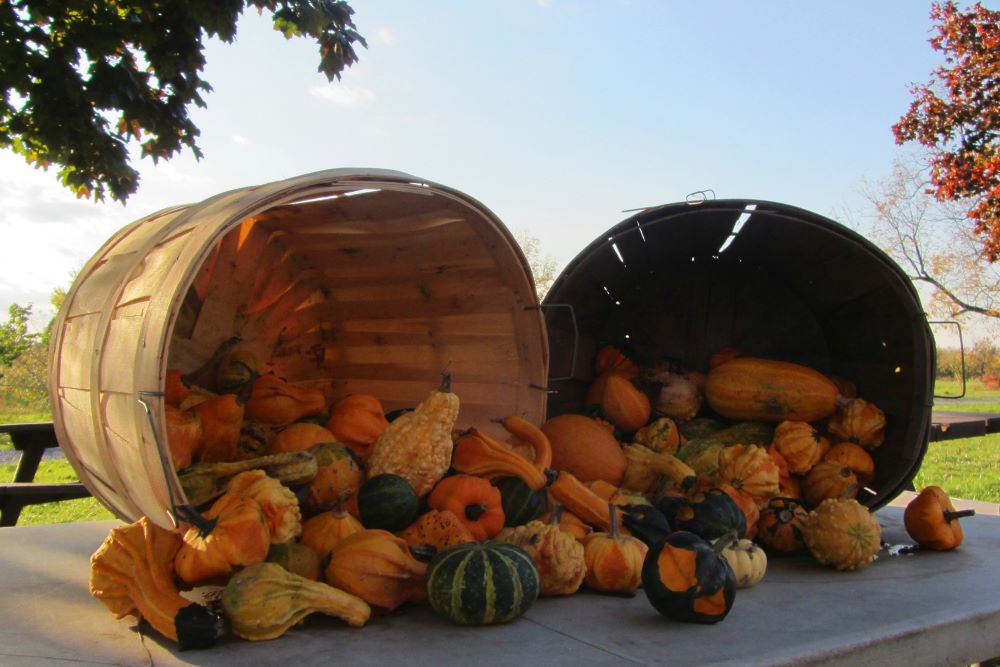Canadian Thanksgiving is just around the corner! Held annually on the second Monday of October, this holiday aligns with the Canadian harvest season. Canadian Thanksgiving is a public holiday, meaning schools shut down and businesses take a well-deserved break. But it’s not just about the day off—it’s a chance to dig into heaps of delicious food and share moments of gratitude with friends and family.
Did you know that Thanksgiving in Canada has deep roots tied to both European settlers and Indigenous cultures? By learning about this celebration, you not only gain a glimpse into history but also an appreciation for how different traditions have come together to shape this national holiday.
The Origins of Canadian Thanksgiving

Canadian Thanksgiving traces back to 1578 when explorer Sir Martin Frobisher held a celebration in Newfoundland to mark his safe return from an expedition in search of the Northwest Passage to Asia. This early gathering, featuring salt beef, biscuits, and mushy peas, was a distinctly European affair that took place in what is now known as Nunavut. Indigenous peoples had already been holding harvest festivals, giving thanks for the bounty of the land, and these traditions would eventually influence what became the Canadian Thanksgiving we know today.
Evolution Over the Centuries

Thanksgiving in Canada has certainly come a long way since its unofficial beginning in 1578. By 1606, Samuel de Champlain was leading the French settlers in gatherings with the local Mi’kmaq people, sharing meals and stories of thanks. The traditional North American Thanksgiving staples—turkey, squash, and pumpkin—started making their way onto Canadian tables around the mid-1700s. In 1879, Thanksgiving became an official national holiday, but it wasn’t until 1957 that it found its permanent home on the second Monday of October. Today, families celebrate at various times throughout the long weekend, from Saturday through Monday, embracing what suits them best.
Thanksgiving and Canadian Culture

Thanksgiving in Canada isn’t just about turkey and pie. Each province has its own way of celebrating. Part of the charm of Thanksgiving in Canada lies in the diversity of dishes you’ll find across the country. In Newfoundland, for example, they serve up a Jigg’s Dinner. The hearty boiled meat dish is paired with split-pea pudding, and resembles the European explorers’ first Thanksgiving meal. Meanwhile, other regions have added their own twists, incorporating local ingredients and flavors. For example, in Quebec, Thanksgiving may feature more French-inspired dishes like tourtière, a meat pie.
Key Differences Between Canadian and U.S. Thanksgiving

The most obvious difference? Timing! Canadian Thanksgiving lands six weeks earlier than the American one, thanks to the shorter Canadian harvest season. This earlier celebration makes sense in a country where the cold, and thus the harvest, arrives earlier in the year. Moreover, while American Thanksgiving is rooted in the Pilgrim gathering story, the Canadian holiday was first a celebration of safe passage for explorers.
Canada also keeps things simpler—no massive shopping extravaganzas here. Instead, it’s all about savoring good food and expressing gratitude. It’s a bit more low-key, allowing you to truly focus on what matters: family, friends, and thankfulness. Because of the earlier celebration date, Canadian Thanksgiving offers a chance to embrace the bright fall colors and flavors of autumn at its peak. The earlier timing allows Canadians to indulge in the beauty of the season, making the holiday feel even more special and intimate.
RELATED: Royal Revelry: Canada’s Best Victoria Day Celebrations
How and Where to Celebrate

Out of your gourd by Loozrboy licensed under CC BY-SA 2.0
Communities across Canada go all out with harvest festivals, parades, and community feasts throughout the weekend. One of the most beloved Thanksgiving events is the Kitchener-Waterloo Oktoberfest Thanksgiving Day Parade in Ontario, held annually on Thanksgiving Monday. Expect to see colorful floats, live marching bands, and a range of local performances.
The Fort Langley Cranberry Festival in British Columbia is a must-visit Thanksgiving event, taking place each year on the Saturday of the Thanksgiving long weekend. This lively celebration pays tribute to the local cranberry harvest, offering a day filled with family-friendly activities, artisan vendors, and live entertainment. You can enjoy dishes prepared with fresh cranberries and even participate in a festive plunge into the cranberry bogs.
You can also head to Prince Edward Island for the PEI Fall Flavours Food & Drink Festival, where you can indulge in local seafood at events like the “Oystobeerfest” culinary experience. Over in Niagara-on-the-Lake, Ontario, join the Niagara Grape & Wine Festival to celebrate the harvest season with wine tastings and live music.
FAQs:
Q: What foods are traditionally served at a Canadian Thanksgiving meal?
A: Turkey is the star, often accompanied by stuffing, mashed potatoes, gravy, cranberry sauce, and vegetables. Pumpkin pie is a classic dessert, but you may also see regional dishes like butter tarts, maple syrup-infused treats, and Bannock, a type of flatbread.
Q: Is Canadian Thanksgiving celebrated outside of Canada?
A: While the main celebration is in Canada, Canadians living abroad often host their own Thanksgiving dinners. Some Canadian communities in the U.S., the UK, and other countries may also observe the holiday.
Q: Are stores open on Canadian Thanksgiving?
A: Most major stores and shopping malls are closed, but many smaller grocery stores, pharmacies, and convenience shops remain open with reduced hours. Restaurants are often open too, but it’s best to check ahead.
Q: How do Canadians decorate for Thanksgiving?
A: Canadians decorate with autumn-themed items like pumpkins, gourds, colorful leaves, and cornucopias. Table settings often feature fall colors, while wreaths, candles, and hay bales add a festive touch.
Q: Can I attend a Canadian Thanksgiving event if I’m a visitor?
A: Absolutely! Canadian Thanksgiving events, like parades, festivals, and community meals, are open to visitors. Many towns welcome tourists to join their celebrations and experience the local traditions firsthand.


Leave a Reply